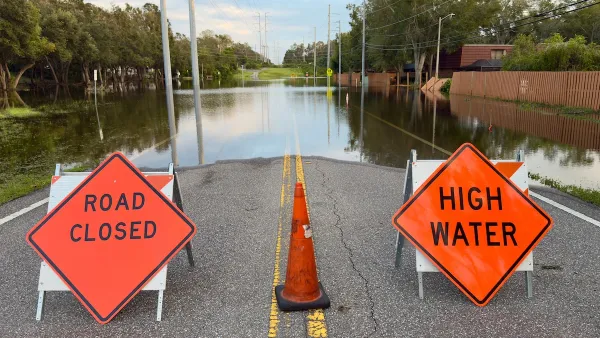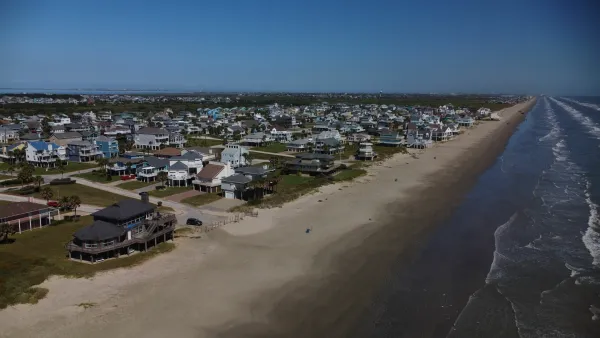Changes to how FEMA calculates flood risk will assess risk at a home-by-home level, rather than estimating the same risk to all homes in the same floodplain.

FEMA's recent updates to its flood insurance program "will sharply raise the cost of flood insurance for many high-value homes in coastal states like Florida, sending dramatic new signals to current and potential waterfront homeowners about the risks they face from extreme weather fueled by climate change."
As reported by Jake Bittle, the new system "has triggered one of the most contentious climate adaptation debates in recent memory." While both sides agree that "the changes reflect a more accurate assessment of flood risk," some politicians "have petitioned FEMA to delay the rollout, hoping to protect their constituents from a decrease in property values that may accompany higher insurance premiums."
In its first update since the system was instituted in the 1960s, FEMA's risk analysis system now "estimates the individual risk facing each home, incorporating mountains of new data about water dynamics and the replacement cost for each home. The result is that homeowners will now pay premiums that reflect the specific flood risk for their home, rather than their general area." These changes rectify old inequities which forced some homeowners in an area to subsidize the costs to higher-risk homes.
"Still, this new rating system represents a partial fix to a program that has fundamental and longstanding issues." With heavily subsidized insurance rates, "The cost of insurance wasn’t high enough to discourage people from living in floodplains, so they just kept building near the water." This underfunding of the program was sharply felt "in 2005, when the claim payouts from Hurricanes Katrina and Rita plunged the program into a $20 billion debt hole that it still hasn’t emerged from."
"The changes from Risk Rating 2.0 are technical in nature, but they have serious political implications: The largest premium increases under the new system are for higher-value homes that are closer to the water." But politicians continue to advocate on behalf of wealthy homeowners. "[T]he spat over Risk Rating 2.0 centers around a question that will only become more relevant as climate change gets worse: How much should the public subsidize risky activity in economically important spheres like real estate?"
FULL STORY: FEMA’s new flood insurance plan is drawing the battle lines over climate adaptation

National Parks Layoffs Will Cause Communities to Lose Billions
Thousands of essential park workers were laid off this week, just before the busy spring break season.

Retro-silient?: America’s First “Eco-burb,” The Woodlands Turns 50
A master-planned community north of Houston offers lessons on green infrastructure and resilient design, but falls short of its founder’s lofty affordability and walkability goals.

Delivering for America Plan Will Downgrade Mail Service in at Least 49.5 Percent of Zip Codes
Republican and Democrat lawmakers criticize the plan for its disproportionate negative impact on rural communities.

Test News Post 1
This is a summary

Test News Headline 46
Test for the image on the front page.

Balancing Bombs and Butterflies: How the National Guard Protects a Rare Species
The National Guard at Fort Indiantown Gap uses GIS technology and land management strategies to balance military training with conservation efforts, ensuring the survival of the rare eastern regal fritillary butterfly.
Urban Design for Planners 1: Software Tools
This six-course series explores essential urban design concepts using open source software and equips planners with the tools they need to participate fully in the urban design process.
Planning for Universal Design
Learn the tools for implementing Universal Design in planning regulations.
EMC Planning Group, Inc.
Planetizen
Planetizen
Mpact (formerly Rail~Volution)
Great Falls Development Authority, Inc.
HUDs Office of Policy Development and Research
NYU Wagner Graduate School of Public Service





























